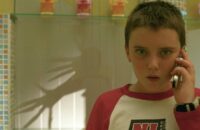Bruce Willis is one of the most bankable actors currently in Hollywood. For decades now, he has been the marquee name above the title of blockbusters and indie films alike. First getting his above-title billing with Blake Edwards’ Blind Date, and following that up with Die Hard, Bruce Willis hit the ground running to A-List status. Over 30 years later, and Bruce Willis still finds his name above the title, but something is different. Now when you see a film with Bruce Willis, you pause and wonder if this movie would be worth your time. He was once synonymous with entertaining films, but now he finds himself among other fading stars like John Travolta, Steven Seagal, and Nicolas Cage. What happened? How’d we get here?
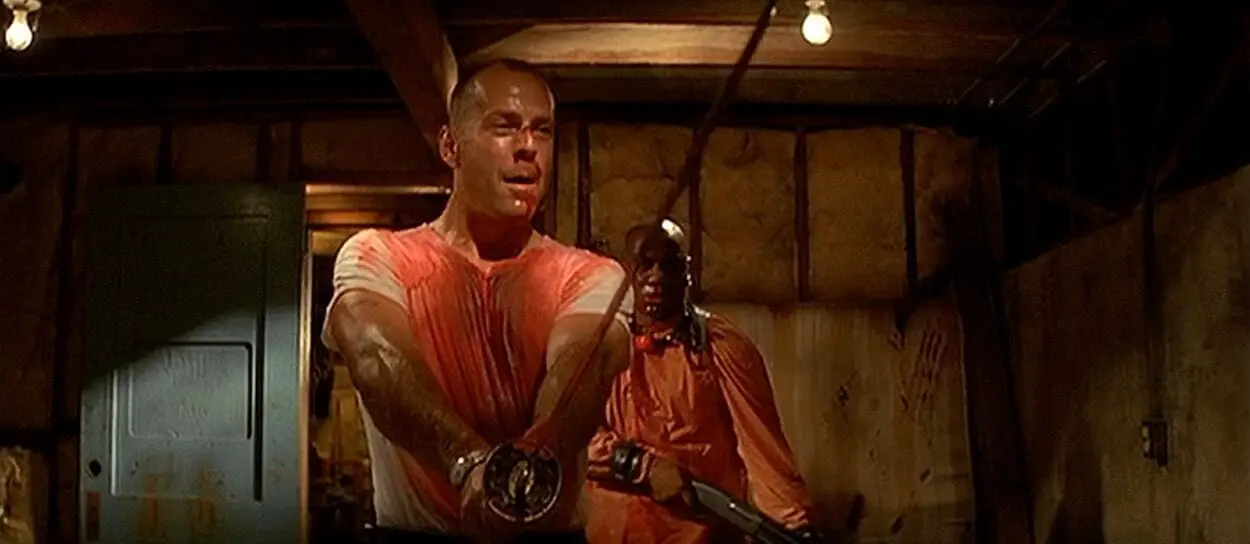
Jumping back to the time before Blind Date, Bruce Willis had already made a name for himself as David Addison on the hit TV show, Moonlighting. For five seasons, Willis flexed his acting and comedic chops with co-star Cybill Shepherd. Between the grueling shoot of a television show, tensions among the cast and crew, and Willis’ burgeoning desire for a film career, Moonlighting came to a close after the fifth season in 1989.
Now free from the restraints of television, Willis continued to ratchet up film hits with a voice-only role as baby Mikey in Look Who’s Talking and returning for the blockbuster sequel, Die Hard 2: Die Harder. Though it seemed like Willis had made the right decision at first, a string of misfires soon befell him. Films that included The Bonfire of the Vanities, Hudson Hawk and Color of Night threatened the freight train that was Bruce Willis’ film career. Thankfully, for Willis, Quentin Tarantino came knocking and resurrected his career (along with, more markedly, John Travolta’s) with Pulp Fiction.
The third Die Hard film, Die Hard With A Vengeance, kept up the momentum. The following couple of years provided a spotty couple of movies from the Bruce Willis filmography. For every 12 Monkeys, there was a Last Man Standing. Sure, he had The Fifth Element, but he also had The Jackal. And the 1997/1998 era of Bruce Willis films highlights a tipping point in what Bruce Willis was offering. The care, desire, and drive seemed to dry up around this point in time.

My brother and I have talked about this period in Bruce Willis’s career extensively. Where had the actor, who carried films effortlessly in the past, gone? The man who could balance humor and action, without seeming annoyed by having to appear on camera. We both agree if you were asking, “How’d we get here,” regarding Bruce Willis, that would start around this time. The late 90s was a seismic shift for Bruce Willis, good and bad.
The funny thing about this era, though, is Bruce Willis starred in one of the highest grossing films of his career: Armageddon. As a whole, I do not enjoy Armageddon, but I acknowledge that I am in the minority. You can look at Bruce’s performance in one of two ways: either he’s seen it all and is willing to do what is needed, or he’s sleepwalking through his role as Harry Stamper. I do not fault Bruce Willis for my lack of enjoyment in the film, but the signs of someone losing interest in a project are on screen. His remaining output for 1998 are boring action/thrillers that anyone could have starred in: Mercury Rising and The Siege. Films like these are going to be a common theme as we delve deeper.
1999 shows Bruce trying to branch out and tap in back to those comedic chops with Breakfast of Champions and The Story of Us. Those films fell by the wayside, though, as he headlined the supernatural phenomenon The Sixth Sense. Playing to Bruce’s late career method of underplaying, Willis’ role as Dr. Malcolm Crowe works well with director M. Night Shyamalan’s slow-burn film-making style. While it looks like Willis may not be trying with the understated role, Willis works extremely hard to provide a character struggling with his feelings.
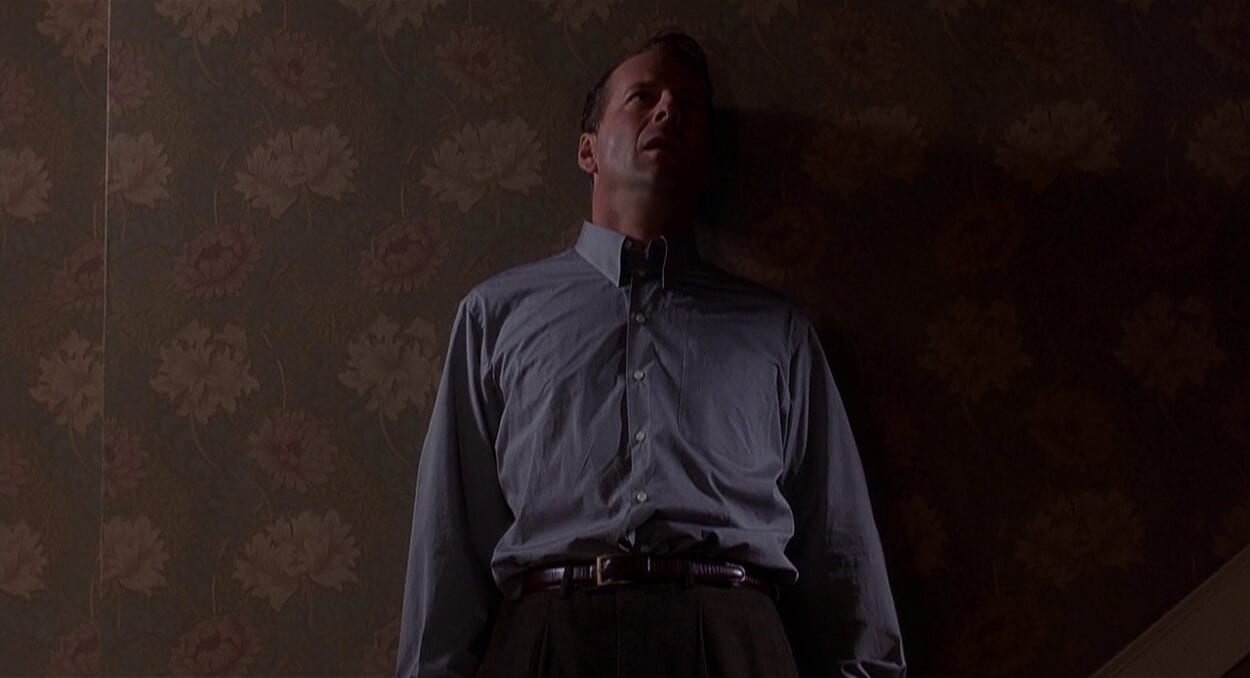
Willis re-teamed with Shyamalan the following year with Unbreakable in another role of a character struggling within himself. Again, Willis does an admirable job of balancing a character’s emotions with his personal feelings to a project. The rest of the early 2000s, though, would be as fruitless for Willis as it was for Shyamalan, with subpar starring projects like Hart’s War, Tears of the Sun, and The Whole Ten Yards filling up his filmography. When not starring in films like these, he made money-grabbing cameos in substandard films like Charlie’s Angels: Full Throttle and Ocean’s Twelve.
A slight bump in respectability came via his role as John Hartigan in Robert Rodriguez and Frank Miller’s film adaptation of Sin City. As a world-weary cop trying to tie up loose ends, Willis found another role where a less-is-more approach worked to his benefit. Also coming out that same year was Hostage, where Bruce Willis starred as a police officer. Though the film itself was fine, Hostage did not shake up the landscape nor offer Willis a character much different than those in the past.
2006 found Bruce at his busiest. With eight film projects released during the calendar year, Willis provided films that anyone would struggle to remember. Yes, he was entertaining enough as he voiced the main character in Over the Hedge, but no one would consider the film to be an animated classic. The rest of the year found sub-par crime thrillers with 16 Blocks to wannabe stylish action films such as Lucky Number Slevin, the 2006 crop of Bruce Willis films found Bruce starring in his blandest group of films yet.

After a 12 year hiatus, Bruce Willis returned to form with the fourth entry in the Die Hard franchise, Live Free or Die Hard. A critical and commercial success, Bruce Willis proved that, if the care is there, he can get audiences to invest in his films. If you mix that with his amusing cameo in Grindhouse, 2007 could be considered a solid year for Bruce. Of course, we would need to overlook the thriller Perfect Stranger, a movie as bland as the title, and, honestly, I’m OK with doing that. It was during this time that Bruce Willis and Kevin Smith crossed paths. While working together on Live Free or Die Hard, the two connected and, according to Smith, decided to work together.
And they did work together. The year was 2010, and the film was Cop Out. I’m not going to rehash the stories that Kevin Smith has told, but it is fair to say that the two did not get along. If you’ve seen the film, it’s apparent that Bruce Willis is unhappy on set. Cop Out did nothing for either Willis or Smith, and both would have benefited from not working on the project. In the same year, Willis had a cameo in The Expendables and a starring role in RED. We’ll come back to these films later on.
The current state of Bruce Willis’ career had the seeds planted in 2011. After having all three films from 2010 go to theaters, the entirety of Bruce’s output in 2011 went straight to video. Both films, Catch .44 and Set Up, portrayed Bruce as the antagonist, one of two roles he would adopt throughout the decade, the other being a police officer.
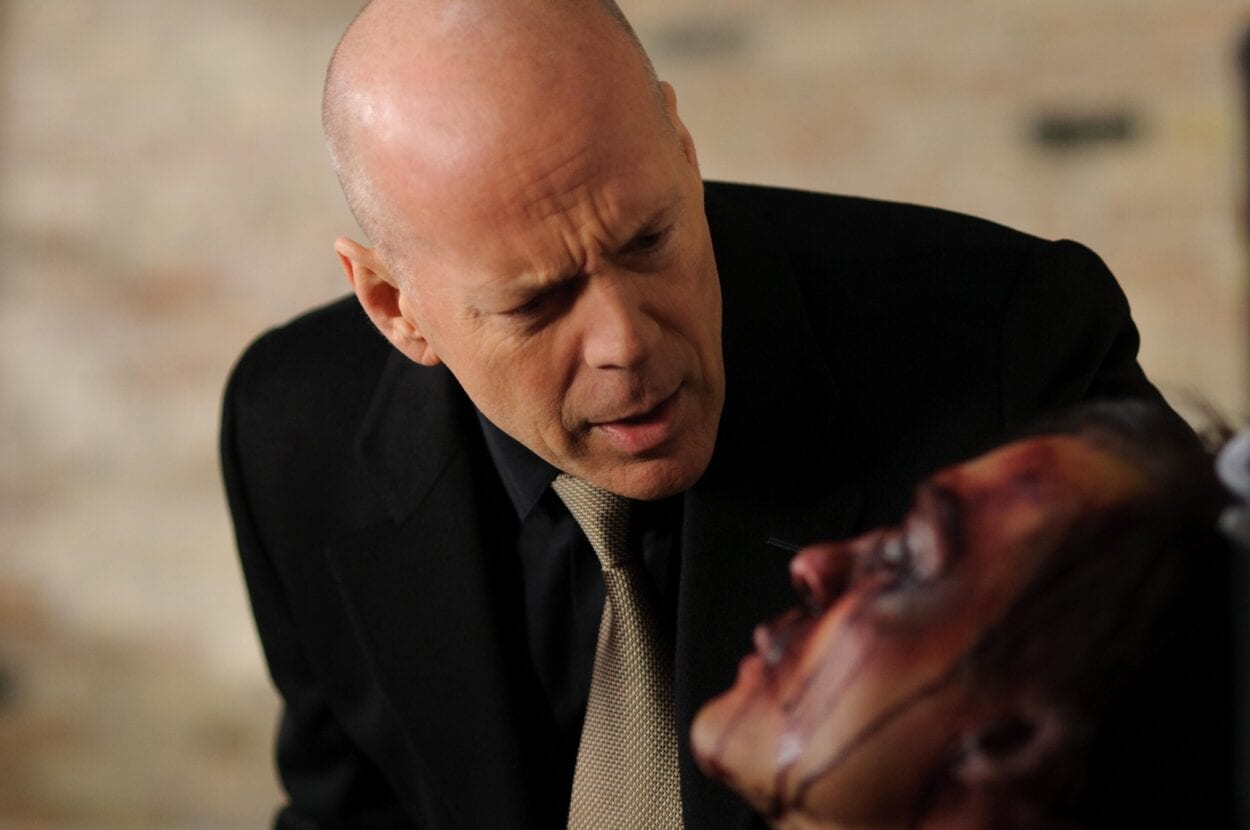
I would say that 2012 offered the last glimpses of the Bruce Willis that we know and love. Yes, there was typical junk like Fire with Fire and The Cold Light of Day, but Bruce also dusted off his comedic side with Moonrise Kingdom. Playing a police officer, but in the world of Wes Anderson, Bruce offered a different type of cop, one that was a welcome surprise. Released the same year, Looper was more of a typical Bruce Willis role, but Rian Johnson’s script provided a meatier role than would be expected. Willis was able to get his hands dirty with plenty of action but offered a more human element and adding depth to his character.
2013 was the year of sequels. The fifth time was not the charm as A Good Day to Die Hard had a bored and tired looking Bruce return to the franchise one more time. Though doing decent financially, the movie felt forced, and even the prospect of returning to the franchise that launched his career did not excite him anymore. Two more forgettable sequels came and went, GI Joe: Retaliation and RED 2. The latter of which is only known for an awkward interview that Bruce gave where he came off as bored and condescending.
Going back to the sequel well in 2014, Bruce returned to Sin City, for Sin City: A Dame to Kill For but that lightning in a bottle from the first one was not there. The biggest sequel news of the year for Bruce was regarding a film he did not make. Willis had dropped out of The Expendables 3, replaced by Harrison Ford. It came to light from Sylvester Stallone that Willis was not part of the film due to a salary dispute. According to Stallone, Bruce was asking for more money than the work required. According to reports, Willis was seeking payment in the neighborhood of one million dollars per day, a request that the filmmakers chose not to accept.
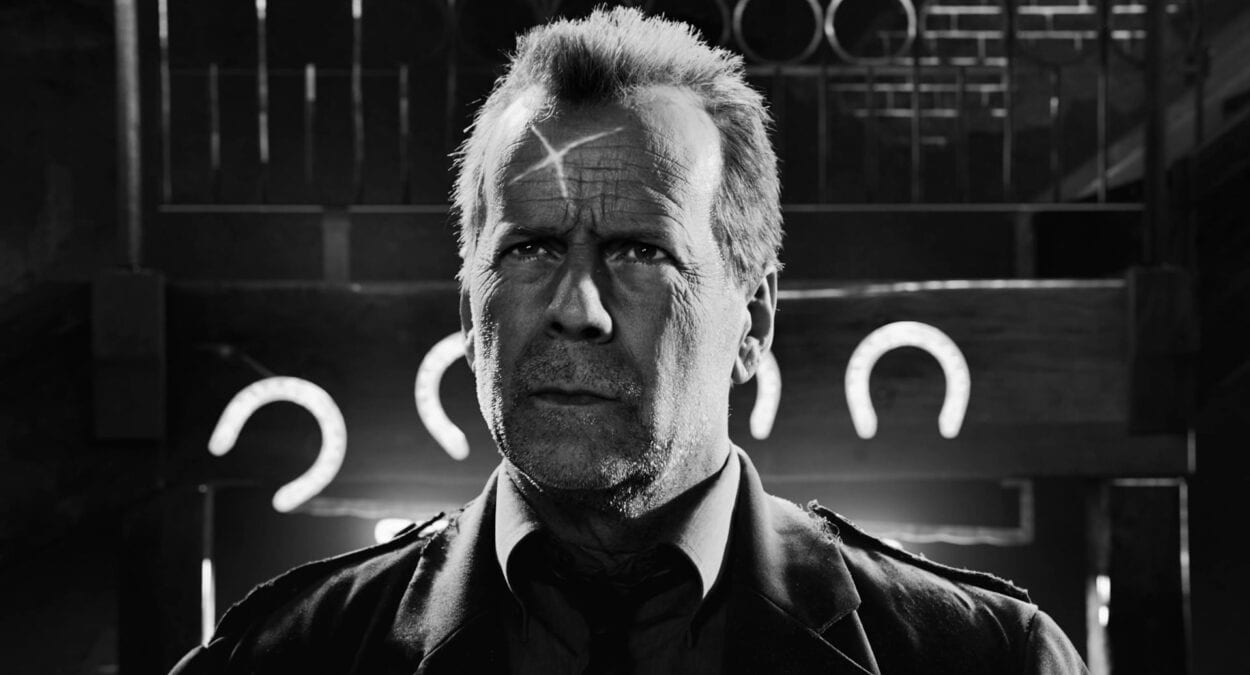
And I believe this may be the most telling of anything to do with Bruce Willis’ career. As the years have waned, the interest and spark does not seem to resonate anymore. Each year that passes by, the DVD shelves and Netflix offerings fill up with churned out dreck produced on quick turnaround times and there to satisfy as little as possible for the lowest common denominator.
Is this what Bruce Willis wants? A lot of his recent straight-to-video films find Willis in small roles that require little locations changes, sometimes one set only, usually able to be filmed in one day. Going off what Stallone had mentioned, it appears that money may be the driving force behind his ongoing career versus enjoyment of, or pride in, his acting work. If Willis seeks one million dollars per day, and his roles are shot in one day, there seems to be credence in doing films for money, and not the art.
Willis is, and probably will remain, a name that can sell a film. In times past, he has shown skills to bring different characters to life. From every-man action hero John McClane to confident boxer-on-the-run Butch Coolidge and weary, yet loving Old Joe, Bruce Willis can add depth, humor, and humanity to characters when he sets his mind to it.
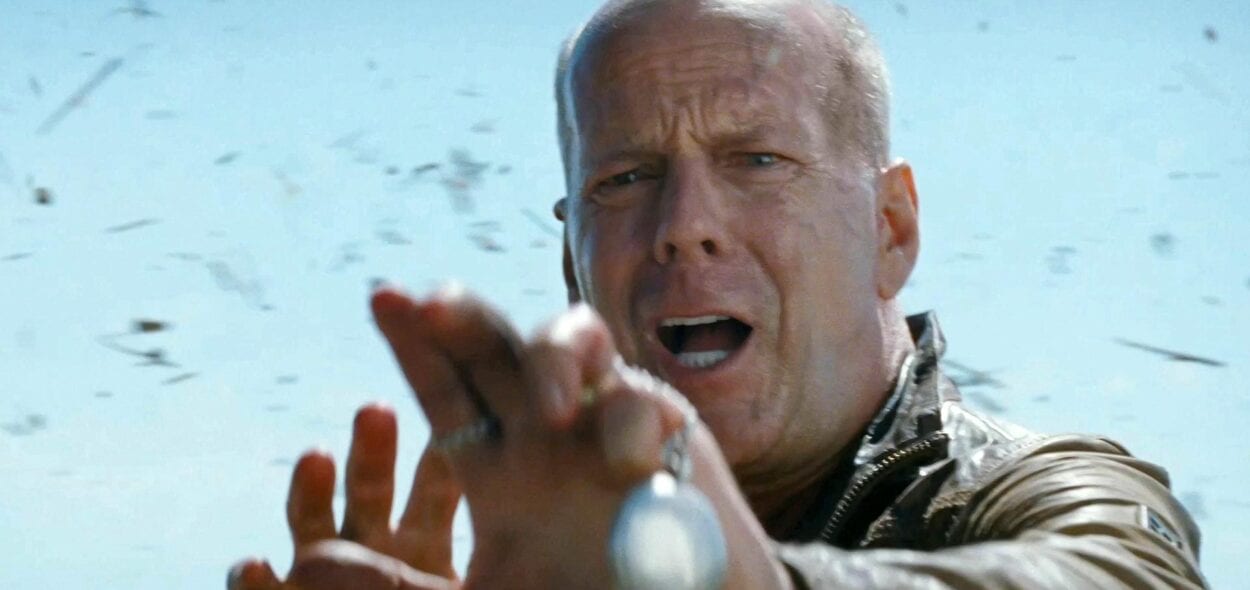
The current output for one of Hollywood’s most renowned actors is owed to a combination of factors and blame should not fall just on Bruce Willis’ feet. We need writers willing to generate enthusiasm, directors with a creative vision, and an actor to take pride in what he does. It takes more work to get this combination together and create something worthwhile, but the payoff is better than cashing a paycheck with no joy. Bruce Willis can return to glory. I know it, and I think Bruce Willis knows it. So, how’d we get here? Can anything be done?
Only one person can answer that question.


